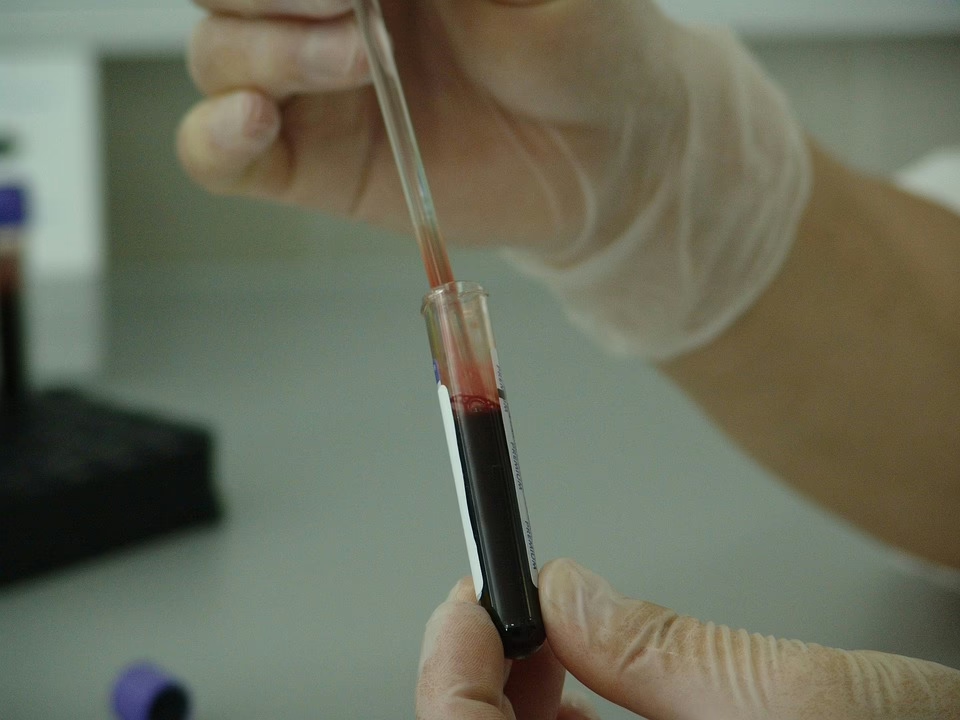Biology Test Paper: What You Need to Know
Biology, the study of life, is a vast and intricate field encompassing everything from the smallest molecules to the largest ecosystems. Success in a biology test paper requires not just memorization, but a deep understanding of the underlying principles and the ability to apply them to novel situations. This comprehensive guide aims to equip you with the knowledge and strategies necessary to excel, covering key topics, test-taking techniques, and effective study methods.
I. Foundations of Biology: Building the Framework
Before delving into specific areas, it’s crucial to establish a solid foundation in the fundamental principles that underpin all biological processes.
1.1 The Characteristics of Life:
Defining life can be surprisingly complex. However, living organisms typically exhibit the following characteristics[1]:
- Organization: Living things are highly organized, from the arrangement of atoms in molecules to the intricate structures of cells, tissues, organs, and organ systems. This hierarchical organization allows for specialized functions and coordinated processes. Disruption of this organization can lead to dysfunction and ultimately, death.
- Metabolism: This encompasses all the chemical reactions that occur within an organism. It includes anabolism (building complex molecules from simpler ones, requiring energy) and catabolism (breaking down complex molecules into simpler ones, releasing energy). Metabolism provides the energy and building blocks necessary for life processes.
- Homeostasis: Maintaining a stable internal environment despite external fluctuations is crucial for survival. This involves complex feedback mechanisms that regulate temperature, pH, osmotic pressure, and other vital parameters. Disruptions in homeostasis can lead to disease.
- Growth: Living organisms increase in size and complexity over time. This growth can involve cell division, cell enlargement, or both. Growth is a fundamental characteristic of life and is essential for development and repair.
- Reproduction: The ability to produce new organisms is essential for the continuation of life. Reproduction can be asexual (involving a single parent) or sexual (involving two parents). Reproduction ensures the propagation of genetic information.
- Response to Stimuli: Living organisms can detect and respond to changes in their environment. This responsiveness allows them to adapt to changing conditions and avoid danger. Responses can be simple reflexes or complex behaviors.
- Evolutionary Adaptation: Over generations, populations of organisms can evolve to become better adapted to their environment. This process involves natural selection, where individuals with advantageous traits are more likely to survive and reproduce. Evolution drives the diversity of life on Earth.
1.2 The Chemical Basis of Life:
Understanding the chemical principles that govern biological processes is essential[2].
- Atoms and Molecules: The building blocks of all matter are atoms, which combine to form molecules. Key biological molecules include water, carbohydrates, lipids, proteins, and nucleic acids.
- Water: Water is essential for life due to its unique properties, including its polarity, cohesion, adhesion, and high heat capacity. It acts as a solvent, a transport medium, and a participant in many chemical reactions.
- Carbohydrates: These are primarily used as energy sources and for structural support. They include simple sugars (monosaccharides), double sugars (disaccharides), and complex carbohydrates (polysaccharides) like starch, glycogen, and cellulose.
- Lipids: These are diverse group of hydrophobic molecules that include fats, oils, phospholipids, and steroids. They serve as energy storage, insulation, and structural components of cell membranes.
- Proteins: These are the workhorses of the cell, performing a vast array of functions, including catalyzing reactions (enzymes), transporting molecules, providing structural support, and acting as signaling molecules. Proteins are made up of amino acids linked together by peptide bonds. Their three-dimensional structure is crucial for their function.
- Nucleic Acids: These store and transmit genetic information. DNA (deoxyribonucleic acid) contains the genetic code, while RNA (ribonucleic acid) plays a role in protein synthesis.
1.3 Cell Theory and Cell Structure:
The cell is the fundamental unit of life[3].
- Cell Theory: This states that all living organisms are composed of one or more cells, the cell is the basic structural and functional unit of life, and all cells arise from pre-existing cells.
- Prokaryotic Cells: These are simpler cells that lack a nucleus and other membrane-bound organelles. Bacteria and Archaea are prokaryotes.
- Eukaryotic Cells: These are more complex cells that contain a nucleus and other membrane-bound organelles, such as mitochondria, endoplasmic reticulum, Golgi apparatus, and lysosomes. Animals, plants, fungi, and protists are eukaryotes.
- Cell Organelles: Each organelle has a specific function within the cell.
- Nucleus: Contains the cell’s DNA and controls cell activities.
- Mitochondria: The “powerhouse” of the cell, responsible for cellular respiration and ATP production.
- Endoplasmic Reticulum (ER): Involved in protein and lipid synthesis.
- Golgi Apparatus: Processes and packages proteins and lipids.
- Lysosomes: Contain enzymes that break down waste materials and cellular debris.
- Cell Membrane: A selectively permeable barrier that regulates the passage of substances into and out of the cell.
II. Key Biological Processes: Understanding the Mechanisms of Life
A solid understanding of core biological processes is essential for success in a biology test paper.
2.1 Cellular Respiration:
This is the process by which cells break down glucose to produce energy in the form of ATP[4].
- Glycolysis: Occurs in the cytoplasm and breaks down glucose into pyruvate.
- Krebs Cycle (Citric Acid Cycle): Occurs in the mitochondria and further oxidizes pyruvate, releasing carbon dioxide and generating electron carriers.
- Electron Transport Chain: Occurs in the inner mitochondrial membrane and uses electron carriers to generate a proton gradient, which drives ATP synthesis through chemiosmosis.
- Anaerobic Respiration (Fermentation): Occurs in the absence of oxygen and produces a limited amount of ATP, along with byproducts like lactic acid or ethanol.
2.2 Photosynthesis:
This is the process by which plants and other organisms use sunlight to synthesize glucose from carbon dioxide and water[5].
- Light-Dependent Reactions: Occur in the thylakoid membranes of chloroplasts and capture light energy to produce ATP and NADPH.
- Light-Independent Reactions (Calvin Cycle): Occur in the stroma of chloroplasts and use ATP and NADPH to fix carbon dioxide and produce glucose.
2.3 Cell Division: Mitosis and Meiosis:
These are the processes by which cells divide to produce new cells[6].
- Mitosis: Produces two identical daughter cells and is used for growth, repair, and asexual reproduction. It involves four phases: prophase, metaphase, anaphase, and telophase.
- Meiosis: Produces four genetically different daughter cells and is used for sexual reproduction. It involves two rounds of division: meiosis I and meiosis II.
- Chromosomes: Structures that carry genetic information in the form of DNA.
- Cell Cycle: The sequence of events that occur from one cell division to the next.
2.4 Genetics: The Science of Heredity:
This is the study of genes, heredity, and variation in living organisms[7].
- Mendelian Genetics: Principles of inheritance based on the work of Gregor Mendel, including the laws of segregation and independent assortment.
- Genes and Alleles: Genes are units of heredity that determine traits, while alleles are different versions of a gene.
- Genotype and Phenotype: Genotype refers to the genetic makeup of an organism, while phenotype refers to its observable characteristics.
- Dominant and Recessive Alleles: Dominant alleles mask the expression of recessive alleles.
- Sex-Linked Inheritance: Inheritance of genes located on sex chromosomes (X and Y in humans).
- Mutations: Changes in DNA sequence that can lead to variations in traits.
- DNA Structure and Replication: DNA is a double helix composed of nucleotides. DNA replication is the process by which DNA is copied.
2.5 Protein Synthesis: From Gene to Protein:
This is the process by which cells create proteins from DNA instructions[8].
- Transcription: The process by which DNA is transcribed into RNA.
- Translation: The process by which RNA is translated into protein.
- Ribosomes: The sites of protein synthesis.
- Codons: Three-nucleotide sequences in mRNA that specify which amino acid to add to the growing polypeptide chain.
- Transfer RNA (tRNA): Molecules that carry amino acids to the ribosome.
III. Evolution and Ecology: Understanding the Interconnectedness of Life
Evolution and ecology provide a broader perspective on the diversity and interactions of life on Earth.
3.1 Evolution:
This is the process by which populations of organisms change over time[9].
- Natural Selection: The process by which individuals with advantageous traits are more likely to survive and reproduce.
- Evidence for Evolution: Fossil record, comparative anatomy, comparative embryology, molecular biology, and biogeography.
- Mechanisms of Evolution: Natural selection, mutation, genetic drift, gene flow.
- Speciation: The process by which new species arise.
- Adaptation: The process by which organisms become better suited to their environment.
3.2 Ecology:
This is the study of the interactions between organisms and their environment[10].
- Populations: Groups of individuals of the same species living in the same area.
- Communities: Groups of different populations living in the same area.
- Ecosystems: Communities and their physical environment.
- Biomes: Large-scale ecosystems characterized by specific climate and vegetation.
- Food Chains and Food Webs: Diagrams that show the flow of energy through an ecosystem.
- Trophic Levels: The position of an organism in a food chain or food web.
- Ecological Succession: The process by which an ecosystem changes over time.
- Biogeochemical Cycles: The movement of elements (e.g., carbon, nitrogen, phosphorus) through ecosystems.
- Human Impact on the Environment: Pollution, deforestation, climate change, and loss of biodiversity.
IV. Preparing for Your Biology Test Paper: Strategies for Success
Effective preparation is crucial for achieving a good score on your biology test paper.
4.1 Understanding the Test Format:
Before you start studying, familiarize yourself with the test format. Is it multiple-choice, short answer, essay-based, or a combination of these? Knowing the format will allow you to tailor your studying to the specific demands of the test. For example, if the test includes essays, you’ll need to practice writing clear and concise arguments supported by evidence. If it’s multiple-choice, you’ll need to be able to quickly and accurately identify the correct answer.
4.2 Effective Study Techniques:
- Active Recall: Don’t just passively read your notes or textbook. Actively try to recall information from memory. This can be done by using flashcards, self-testing, or teaching the material to someone else. Active recall strengthens memory and improves understanding.
- Spaced Repetition: Instead of cramming all your studying into one long session, spread it out over several days or weeks. This technique, known as spaced repetition, allows your brain to consolidate information more effectively.
- Concept Mapping: Create visual diagrams that connect different concepts and ideas. This helps you see the big picture and understand how different topics are related.
- Practice Questions: Working through practice questions is essential for solidifying your understanding and identifying areas where you need more work. Use practice questions from your textbook, online resources, or past exams.
- Study Groups: Studying with others can be a great way to learn from different perspectives, quiz each other, and stay motivated.
4.3 Content Mastery:
- Focus on Key Concepts: Prioritize studying the core concepts and principles of biology. These are the foundational ideas that underlie everything else.
- Understand, Don’t Just Memorize: Aim for deep understanding of the material, not just rote memorization. This will allow you to apply your knowledge to novel situations and answer more challenging questions.
- Use Diagrams and Visual Aids: Biology is a visual subject. Use diagrams, illustrations, and videos to help you understand complex processes and structures.
- Relate Biology to Real-World Examples: Connecting biological concepts to real-world examples can make them more engaging and easier to remember.
4.4 Time Management:
- Create a Study Schedule: Plan your studying in advance and allocate specific time slots for different topics.
- Break Down Large Tasks: Divide large topics into smaller, more manageable chunks.
- Prioritize Important Topics: Focus on the topics that are most likely to be on the test and that you find most challenging.
- Avoid Procrastination: Don’t wait until the last minute to start studying.
V. Test-Taking Strategies: Maximizing Your Performance
Even with thorough preparation, effective test-taking strategies are crucial for maximizing your score.
5.1 Reading the Questions Carefully:
- Understand the Question Completely: Before attempting to answer a question, make sure you understand exactly what it’s asking. Pay close attention to keywords and phrases.
- Identify the Key Information: Determine what information is relevant to the question and what information is not.
- Avoid Making Assumptions: Don’t assume anything that is not explicitly stated in the question.
5.2 Answering Different Question Types:
- Multiple Choice: Read all the options carefully before selecting your answer. Eliminate options that you know are incorrect. If you’re unsure, try to narrow down the choices to two or three.
- Short Answer: Be concise and to the point. Answer the question directly and provide only the information that is asked for.
- Essay Questions: Plan your essay before you start writing. Develop a clear thesis statement and support it with evidence from your knowledge of biology. Organize your essay into paragraphs with clear topic sentences.
- Diagrams and Labeling: Follow the instructions carefully. Use a ruler and pencil for neat and accurate diagrams. Label all parts of the diagram clearly and correctly.
5.3 Time Management During the Test:
- Allocate Time Wisely: Before you start the test, estimate how much time you should spend on each question.
- Pace Yourself: Don’t spend too much time on any one question. If you’re stuck, move on to the next question and come back to it later.
- Review Your Answers: If you have time at the end of the test, review your answers to make sure you haven’t made any careless mistakes.
5.4 Managing Test Anxiety:
- Prepare Thoroughly: The best way to reduce test anxiety is to be well-prepared.
- Practice Relaxation Techniques: Deep breathing, meditation, and visualization can help you calm down before and during the test.
- Positive Self-Talk: Remind yourself that you are capable and that you have prepared well.
- Focus on the Task at Hand: Don’t let your thoughts wander. Concentrate on reading the questions carefully and answering them to the best of your ability.
VI. Sample Questions and Answers:
To further illustrate the concepts discussed, here are a few sample questions and their answers.
Question 1 (Multiple Choice):
Which of the following is the primary function of mitochondria in eukaryotic cells?
a) Protein synthesis
b) Lipid synthesis
c) Cellular respiration
d) DNA replication
Answer: c) Cellular respiration
Explanation: Mitochondria are the sites of cellular respiration, the process by which cells break down glucose to produce energy in the form of ATP.
Question 2 (Short Answer):
Explain the difference between mitosis and meiosis.
Answer: Mitosis is a type of cell division that produces two identical daughter cells, while meiosis is a type of cell division that produces four genetically different daughter cells. Mitosis is used for growth, repair, and asexual reproduction, while meiosis is used for sexual reproduction.
Question 3 (Essay Question):
Describe the process of natural selection and explain how it leads to evolutionary adaptation.
Answer: Natural selection is a process by which individuals with advantageous traits are more likely to survive and reproduce in a particular environment. This is because they are better equipped to obtain resources, avoid predators, or resist disease. Over time, the frequency of these advantageous traits increases in the population, leading to evolutionary adaptation. For example, consider a population of moths living in a forest. If the trees in the forest are light-colored, moths with light-colored wings will be better camouflaged and less likely to be eaten by predators. As a result, they will be more likely to survive and reproduce, passing on their genes for light-colored wings to their offspring. Over time, the population will evolve to have a higher proportion of light-colored moths, which is an adaptation to the light-colored forest environment. Natural selection acts on existing variation within a population, favoring individuals with traits that are best suited to their environment. This process can lead to the development of complex adaptations over long periods of time.
VII. Resources for Further Study:
- Textbooks: Your biology textbook is your primary resource. Read it carefully and take notes.
- Online Resources: There are many excellent online resources for studying biology, including websites, videos, and practice questions. Some popular resources include Khan Academy, Crash Course Biology, and BioNinja.
- Study Guides: Study guides can help you organize your notes and focus on the most important concepts.
- Tutoring: If you’re struggling with biology, consider getting help from a tutor.
VIII. Conclusion:
Preparing for a biology test paper requires a combination of thorough content knowledge, effective study techniques, and strategic test-taking skills. By mastering the key concepts, practicing actively, and managing your time wisely, you can significantly improve your performance. Remember that understanding the underlying principles of biology is more important than memorizing facts. Focus on connecting different concepts and applying your knowledge to real-world examples. With dedication and the right approach, you can confidently tackle your biology test and achieve your academic goals.
References
[1] Campbell, N. A., & Reece, J. B. (2005). Biology (7th ed.). Benjamin Cummings. [2] Berg, J. M., Tymoczko, J. L., & Stryer, L. (2002). Biochemistry (5th ed.). W H Freeman. [3] Alberts, B., Johnson, A., Lewis, J., Raff, M., Roberts, K., & Walter, P. (2002). Molecular Biology of the Cell (4th ed.). Garland Science. [4] Nelson, D. L., & Cox, M. M. (2008). Lehninger Principles of Biochemistry (5th ed.). W. H. Freeman. [5] Taiz, L., & Zeiger, E. (2010). Plant Physiology (5th ed.). Sinauer Associates. [6] Lodish, H., Berk, A., Zipursky, S. L., Matsudaira, P., Baltimore, D., & Darnell, J. (2000). Molecular Cell Biology (4th ed.). W. H. Freeman. [7] Griffiths, A. J. F., Miller, J. H., Suzuki, D. T., Lewontin, R. C., & Gelbart, W. M. (2000). An Introduction to Genetic Analysis (7th ed.). W. H. Freeman. [8] Watson, J. D., Baker, T. A., Bell, S. P., Gann, A., Levine, M., & Losick, R. (2004). Molecular Biology of the Gene (5th ed.). Benjamin Cummings. [9] Futuyma, D. J. (2005). Evolutionary Biology (3rd ed.). Sinauer Associates. [10] Smith, T. M., & Smith, R. L. (2015). Elements of Ecology (9th ed.). Pearson.

























Add Comment